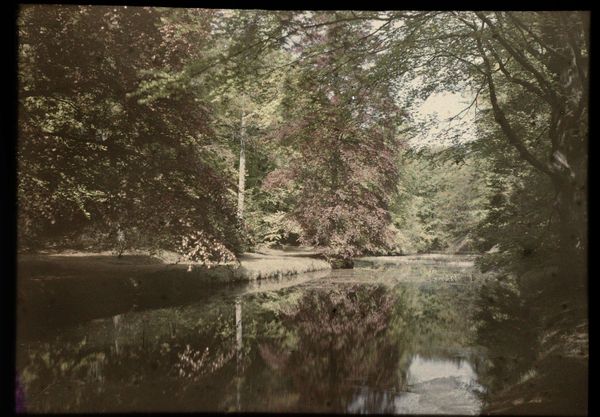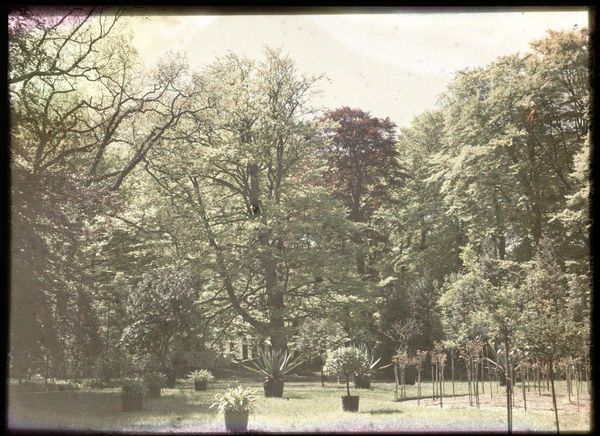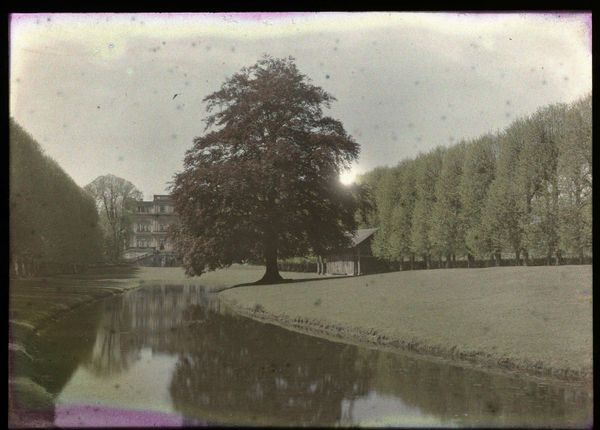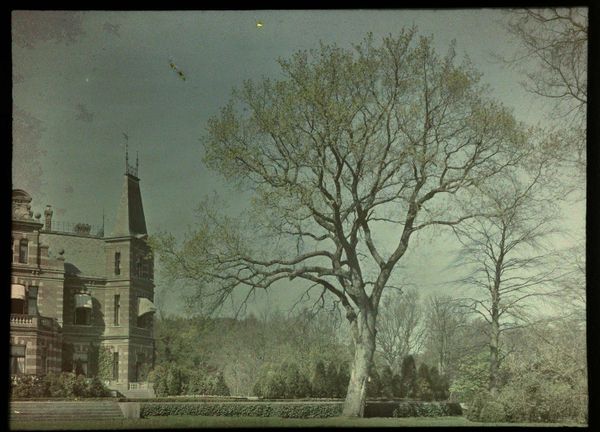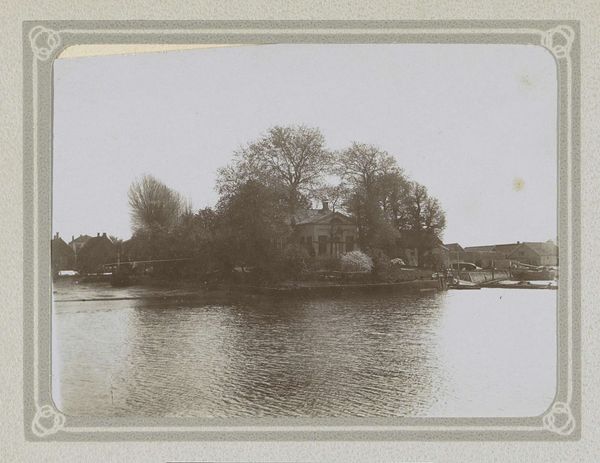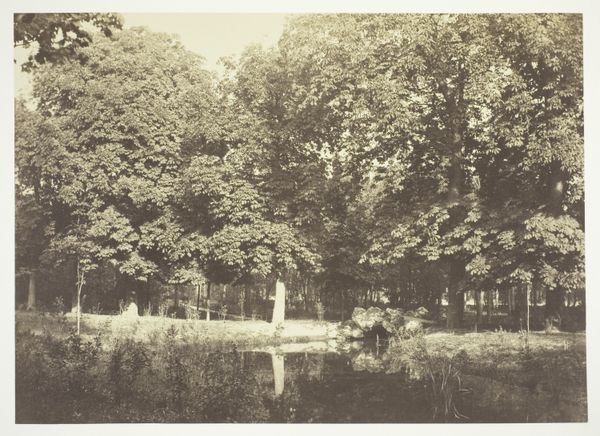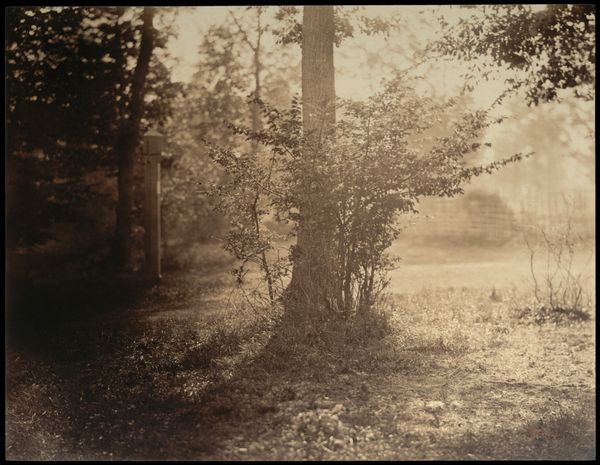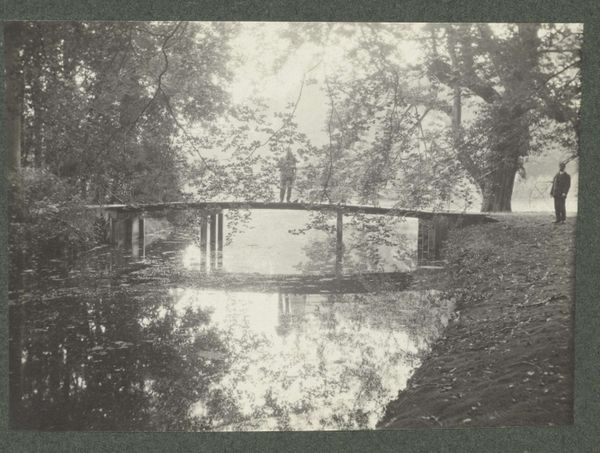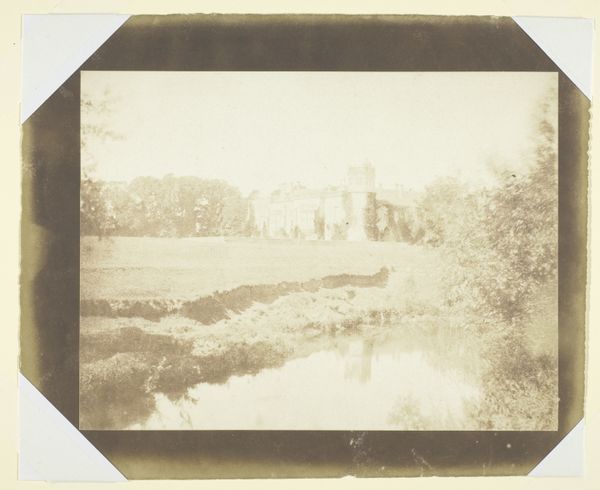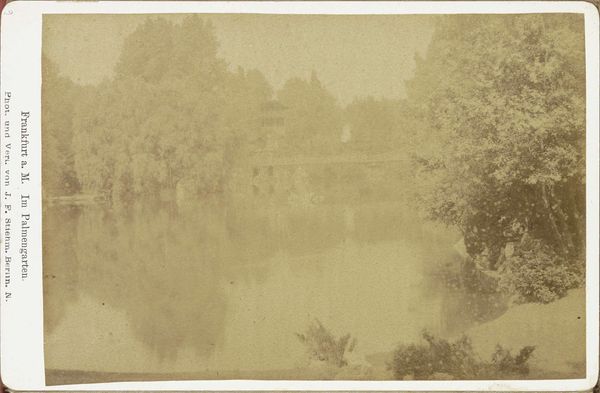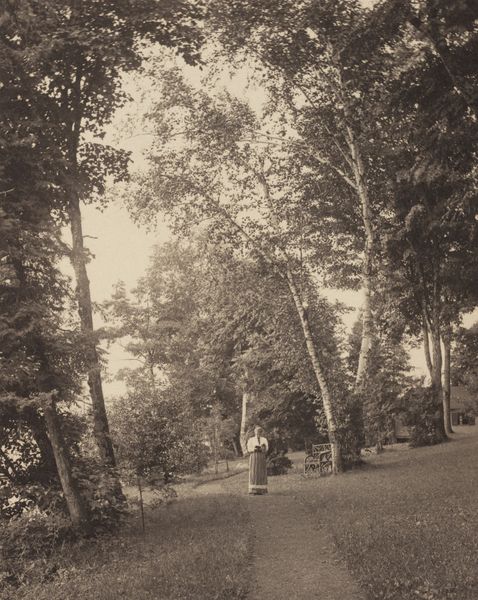
Dimensions: 9 x 11.9 cm (3 9/16 x 4 11/16 in.)
Copyright: Public Domain
Curator: Well, what’s your first impression of this photographic image? To me it whispers of a lost aristocracy, that sort of pre-revolutionary Russia feeling… Editor: I’d say my immediate response is…it looks a little faded. The palette, that muted orange peaking from the autumnal trees, the reflections on the water... It feels somehow like it’s speaking from behind a veil. Curator: That veil of time perhaps? This is “Temple of Amour” by Constantin Mitrofanovitsh Flórinsky, taken in 1907. What interests me is how photographs like this catered to orientalist desires within Imperial Russia. You had the aristocracy playing at pastoral life, consuming an idea of ‘nature’ meticulously shaped to reflect their own status and privilege. Editor: That's fascinating. The temple looks as though it is rendered almost in chalk or clay. Are you suggesting that these architectural structures— and of course the manicured gardens that hold them— became a sort of set design for constructing, essentially, upper-class identities? Curator: Exactly! These images were often consumed by an audience keen to find echoes of classical art in their modern landscape. Look at how the formal composition invites our eye to wander to the Temple almost instinctively. The photograph and settings allowed viewers, both then and now, to almost fantasize about stepping into this ‘classical’ or ‘historical’ moment. Editor: Absolutely. And even today, through the wear of the materials involved in producing a photographic plate of this age, the marks of decay draw one to that historical construction you discuss. And let's think about who would have had access to such an artistic medium, which becomes a statement in itself. It all funnels into making the "gaze" of that era so loaded. Curator: Right— the social conditions of viewing are just as much a part of the picture as the subject. Even with those ‘faded’ tones, the social stratification encoded into the scene still speaks clearly, perhaps now even more than it would to a contemporary audience at the time of its creation. Editor: A faded grandeur indeed. All those delicate layers of materials conveying the decay of history, reminding us of the means and mode of its production. Curator: Precisely. History imbued not just in what we see but in how it was seen.
Comments
No comments
Be the first to comment and join the conversation on the ultimate creative platform.
